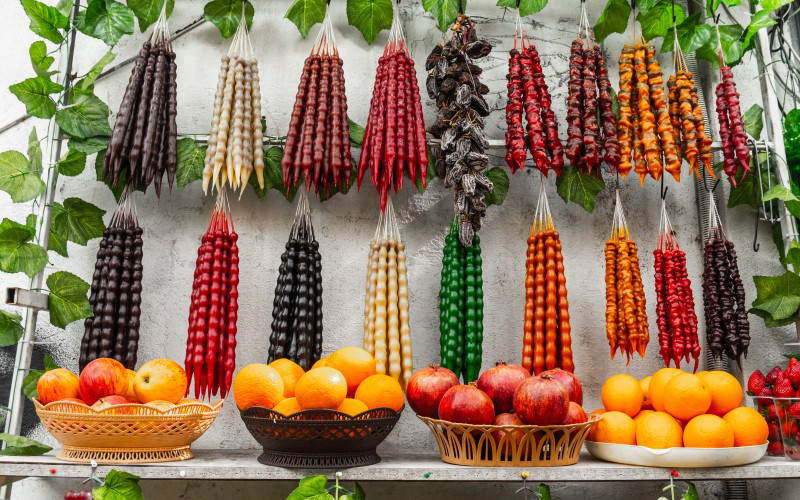Differences in Fruit and Vegetable Traditions Among Cultures

10 Aug
Differences in Fruit and Vegetable Traditions Among Cultures and Their Importance
Differences in Fruit and Vegetable Traditions Among Cultures and Their Importance
Fruits and vegetables are essential components of a healthy diet, but their use varies significantly among different cultures. These differences reflect cultural diversity and have a significant impact on dietary habits and overall health. In this blog, we will explore how traditions in using fruits and vegetables differ across cultures and the importance of these differences.
Cultural Traditions in Using Fruits and Vegetables
1. United States
In the United States, fruits and vegetables are widely consumed as part of a healthy diet. Salads, juices, and fresh vegetables are integral to daily meals. Seasonal fruits are also encouraged as snacks and healthy options.
2. Mexico
In Mexico, fruits and vegetables are used extensively in traditional dishes such as tacos and enchiladas. Vegetables like chili peppers and tomatoes are commonly used, while fruits like avocado and mango are integral to various dishes and desserts.
3. France
In France, consuming fruits and vegetables is part of a healthy lifestyle. Vegetables such as cabbage and carrots are used in main dishes, while fruits like apples and grapes are utilized in desserts and pastries.
4. Italy
Italian cuisine features fresh vegetables like tomatoes, eggplants, and garlic as key ingredients in dishes like pizza and pasta. Fruits such as figs and grapes are also important in Italian cuisine, used in desserts and side dishes.
5. India
Indian cuisine is known for using vegetables such as potatoes, beans, and zucchini in various dishes like curry and naan bread. Fruits like mangoes are used in juices and desserts.
6. Japan
Japanese cuisine is rich in fresh vegetables like tomatoes, spinach, and eggplant. Seasonal fruits like apples and plums are used in desserts. Japanese food often relies on simple preparation methods that preserve the natural flavor of ingredients.
7. China
In China, vegetables like Chinese cabbage and mushrooms are used in dishes such as stir-fry and dim sum. Fruits like pineapple are used in sweet and sour dishes.
8. Korea
In Korea, vegetables such as cabbage and cucumber are used to prepare dishes like kimchi. Fruits such as pears and oranges are used in juices and desserts.
9. Egypt
Egyptian cuisine is rich in vegetables like fava beans, lentils, and onions, used in dishes such as koshari and moussaka. Fruits like bananas and apples are commonly used in desserts.
10. Morocco
Moroccan cuisine is famous for using vegetables like carrots, onions, and potatoes in dishes such as tagine and couscous. Fruits like apricots and raisins are used in sweet dishes.
11. Turkey
In Turkey, vegetables like eggplant and tomatoes are used in dishes such as kebabs and pastries. Fruits like pomegranates and oranges are used in desserts and beverages.
12. South Africa
South African cuisine is a blend of various cultural influences. Vegetables like potatoes and carrots are used in traditional dishes, while fruits such as mangoes and pineapples are used in juices and desserts.
13. Brazil
In Brazil, fruits such as guava and papaya are used in juices and desserts. Vegetables like sweet potatoes and corn are staples in Brazilian cuisine.
The Importance of Diverse Use of Fruits and Vegetables
Diverse use of fruits and vegetables provides numerous health benefits. A varied diet offers a wide range of essential nutrients like vitamins, minerals, and fiber. Consuming a diverse array of fruits and vegetables can also reduce the risk of chronic diseases such as heart disease, diabetes, and obesity.
The Impact of Traditions on Public Health
Cultural traditions play a significant role in shaping dietary habits, which in turn affects overall health. By understanding and appreciating different food traditions, we can improve our diet and increase awareness of the benefits of consuming fruits and vegetables worldwide.
Conclusion
Differences in fruit and vegetable traditions among cultures showcase rich cultural and dietary diversity. By understanding and appreciating these traditions, we can promote dietary diversity and enhance public health. Eating fruits and vegetables in varied ways enhances health benefits and encourages a healthy, balanced lifestyle.
Leave a comment





Subscribe to newsletter




0 Comments